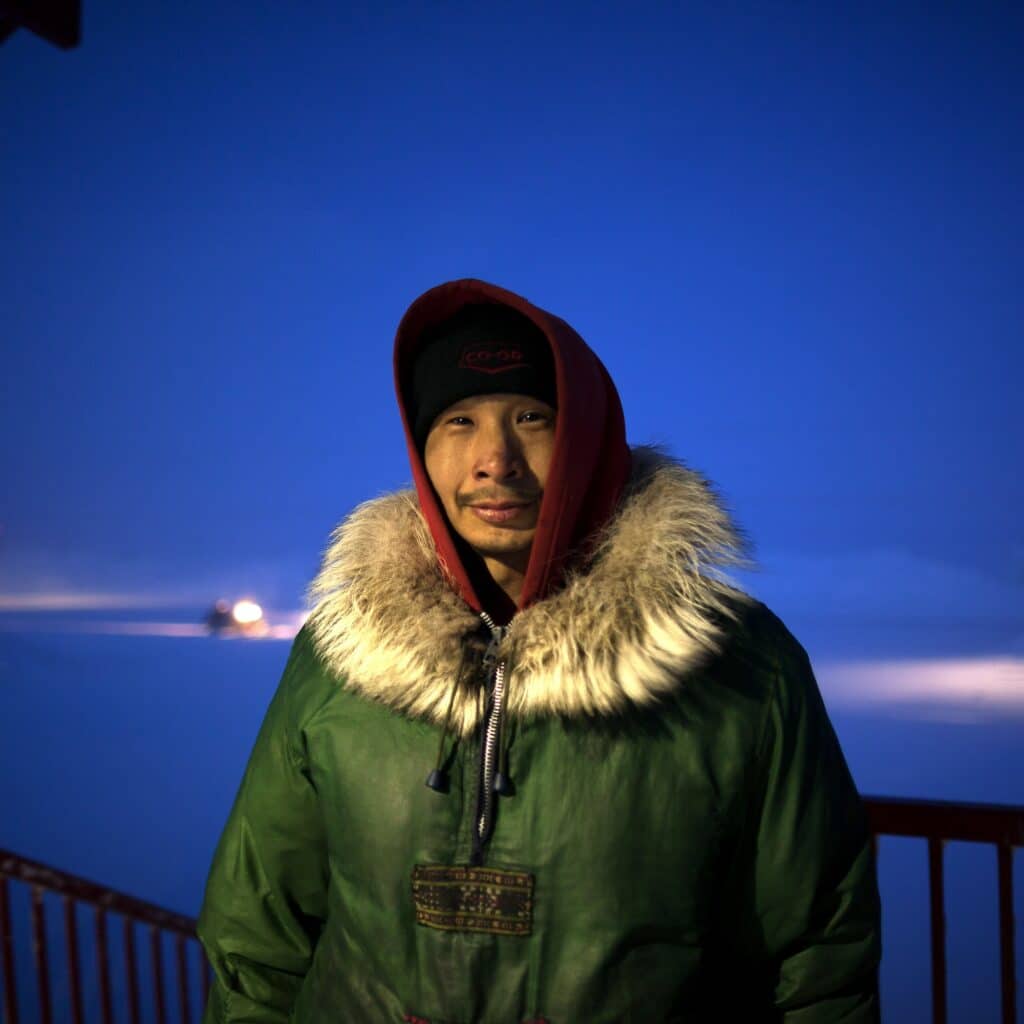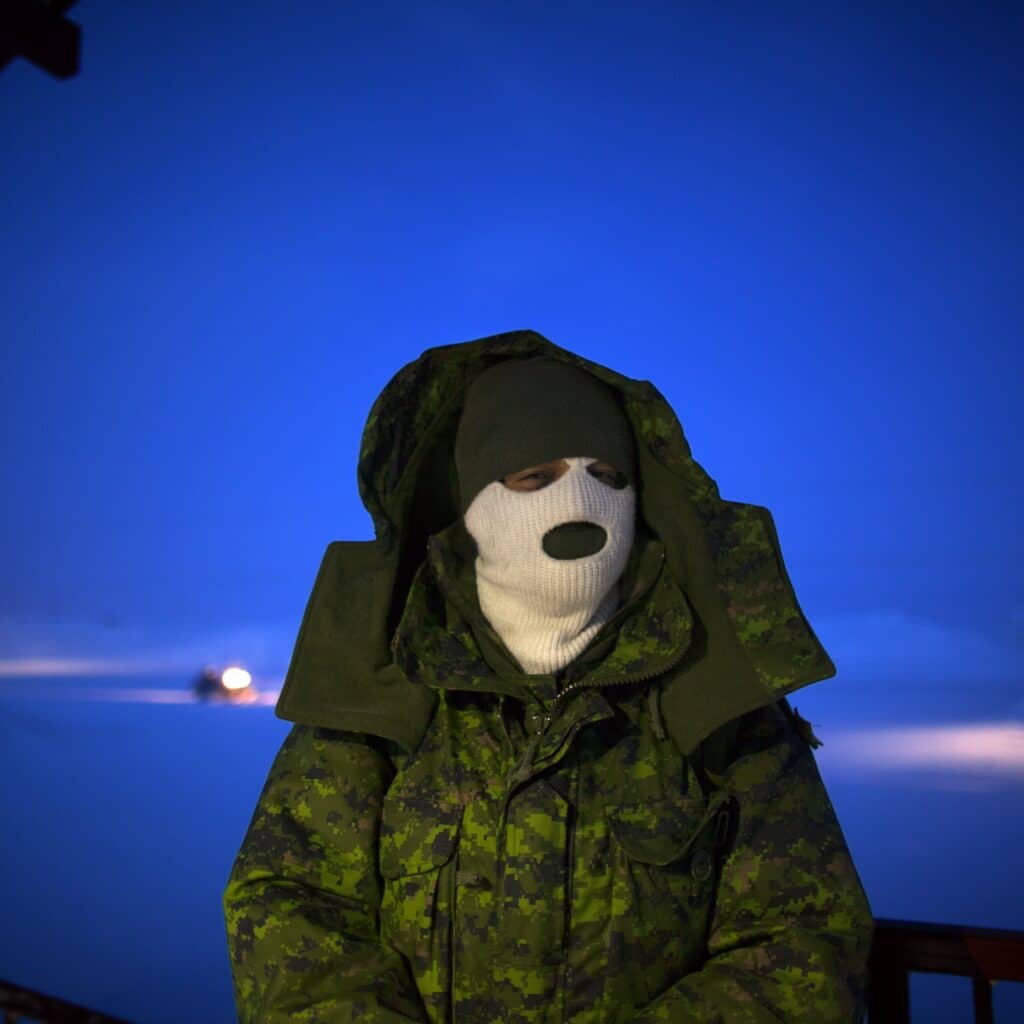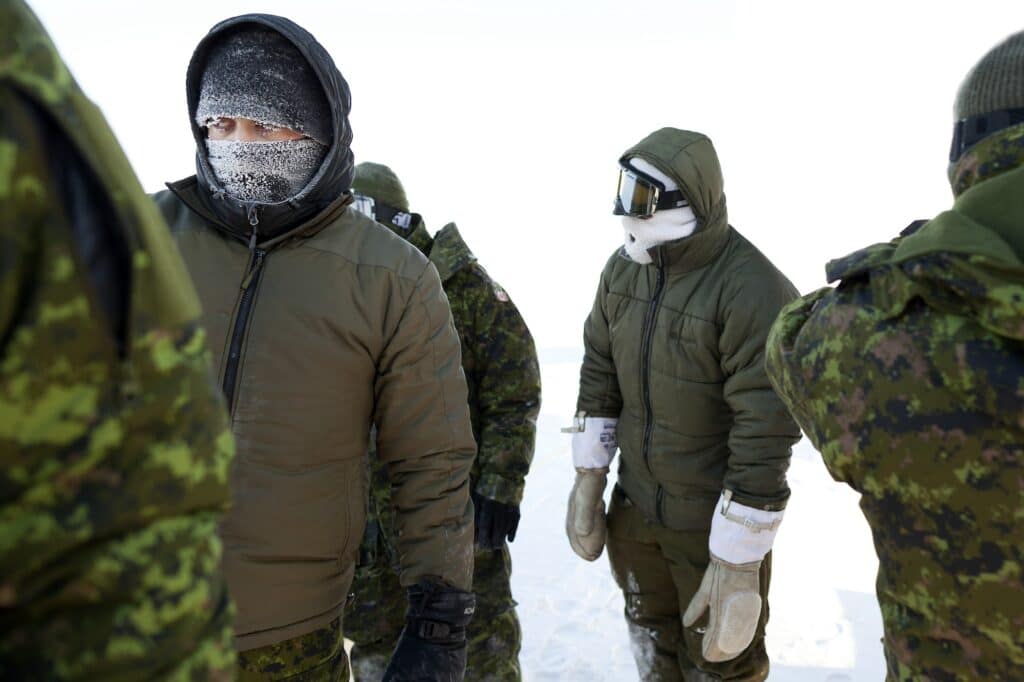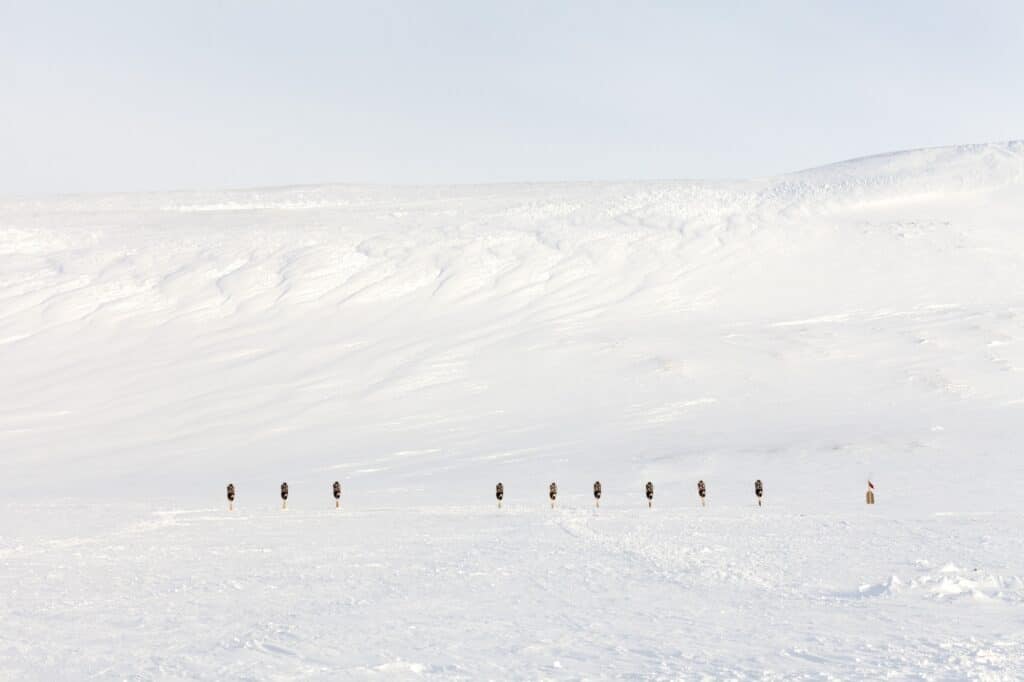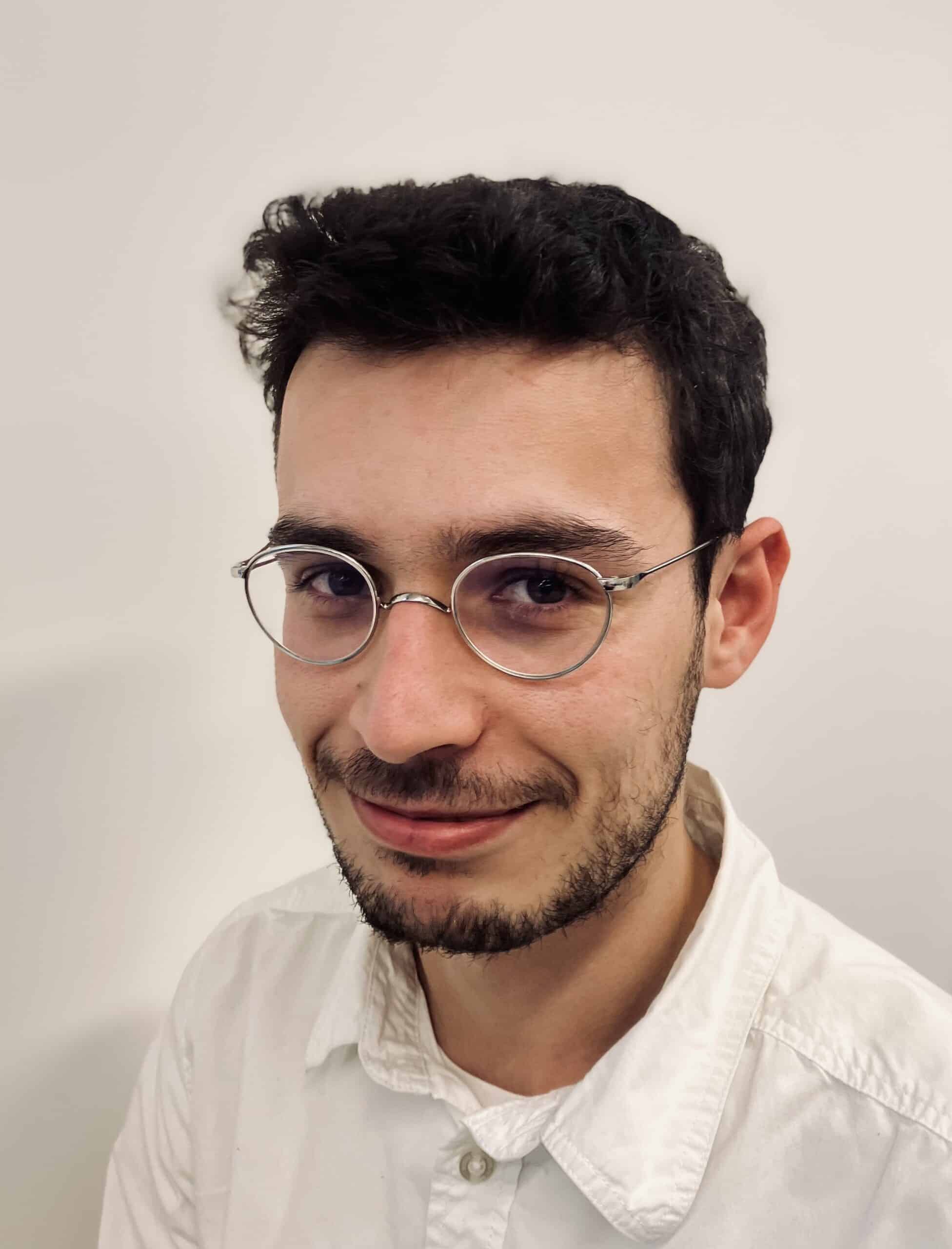“Turning North—Canada’s true north is what makes us unique. And we cannot understate the importance of safeguarding the Canadian Arctic. With climate change redrawing maritime routes, more countries are turning their eyes north. The Arctic is becoming more accessible, more attractive to those who want to research the region and do business through it,” stated Mélanie Joly, Canada’s Minister of Foreign Affairs, in early November at the Montreal Council on Foreign Relations.
The exercise of sovereignty in the polar region has become a critical agenda for the Canadian government, which is committed to making “the investments necessary to reinforce [the country’s] Northern security and critical infrastructure.” This effort towards ensuring safety is a collaborative endeavor, involving Arctic allies such as Iceland, Norway, Sweden, Finland, and Denmark (through Greenland), as well as the United States.
Reflecting on the current situation, Emmanuelle Léonard notes that “the stakes in this arena are immense at the moment.” Thanks to the Canadian Forces Arts Program, the Canadian photographer was able to follow Operation Nunalivut and the training of Inuit soldiers and rangers in the Nunavut region. Her work illustrates the many challenges arising from global warming and the melting polar ice.
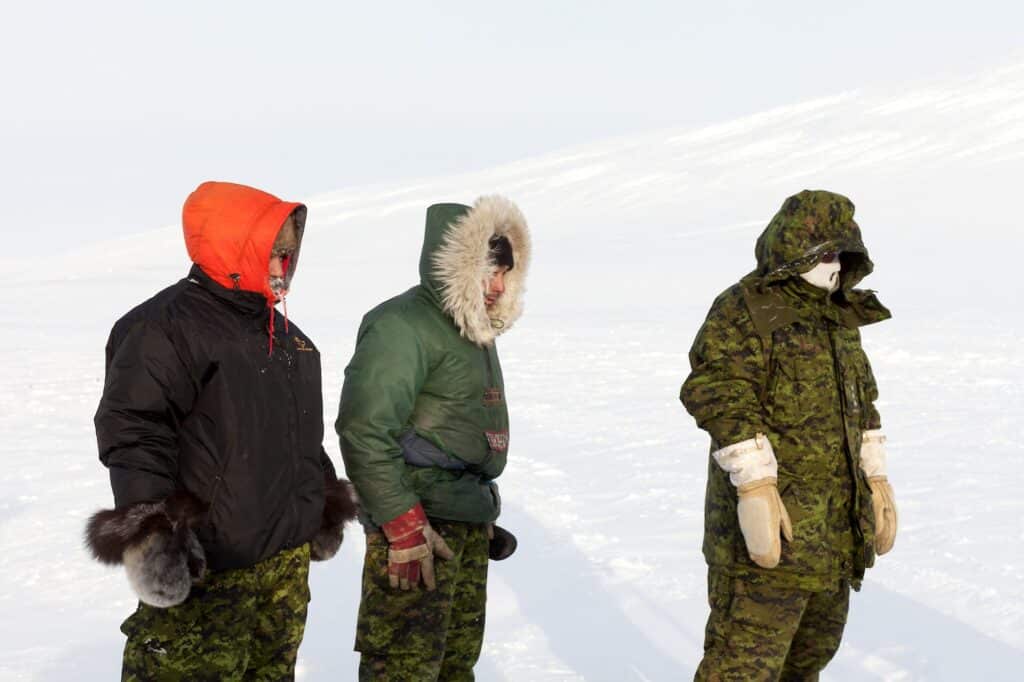
Sovereignty and security
While it is estimated that 90% of Canadians may never have the opportunity to visit the Arctic, Stéphane Roussel, an expert in geopolitical issues in Canada’s Far North, believes that losing this territory deeply impact the national psyche.
This theme of sovereignty is palpable in Emmanuelle Léonard’s photography. Her work is described by Catherine Bédard, Deputy Director of the Canadian Cultural Centre in Paris, as “charged with unspoken names, visual, poetic, and political messages, quite distinct from official and academic discourse.” Although Léonard positions herself as an almost neutral observer, “her art does generate extremely powerful imagery” of this Canadian identity. “The most glaring issue is the fear of losing Canadian sovereignty in the region,” comments Roussel.
For Canadians, the predominant worry is maintaining governmental control over the region. Roussel emphasizes that the Canadian Arctic is first and foremost an immense region, almost as big as Europe, with very scant infrastructure.
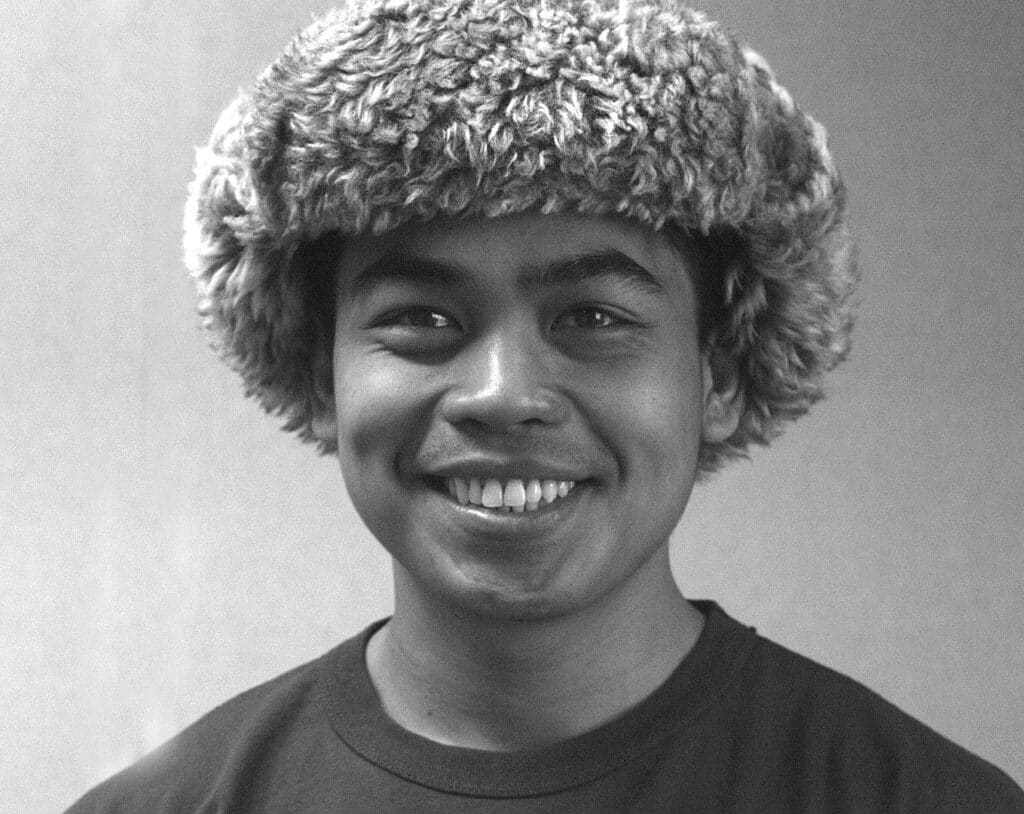
“Canada monitors the region and perceives it as a vulnerability,” elaborates the professor. The sparse infrastructure presents logistical challenges of deploying troops in the region. However, Roussel sees this as a diversion: “In a potential conflict with Russia, the Arctic would probably not be a major battleground. The focus would be on the other side of the Atlantic.”
The crucial issue, the scientist explains, lies in the capacity of the Canadian government and the military to provide “services” in the Far North. This means ensuring that the needs of residents in these remote areas are met comparably to those in cities like Montreal or Toronto.
Roussel highlights an example of a rescue operation, where the Canadian Armed Forces and Inuit rangers are the only entities capable of providing assistance in such remote regions. “Given the extreme isolation and vast distances, the armed forces are often the main, if not the only, government agency able to get there.” These armed forces then act as intermediaries, or even “service providers” for other government departments. This role extends to responding to climate-related crises, and “delivering government services, such as justice.”
The last issue involves public opinion and Canadian identity. “The Canadian territory is vast and diverse,” Roussel points out, acknowledging the English- and French-speaking areas, as well as those inhabited solely by the Inuit. “As a result, there are few unifying symbols. But the Arctic stands out as one of them.”
Preserving this aspect of Canadian identity involves acclimatizing the population to life in the Far North, and protecting the Arctic environment from the ravages of global warming: subsiding soils, lake outbursts, coastal erosion, the melting of ice, and the thawing of permafrost…
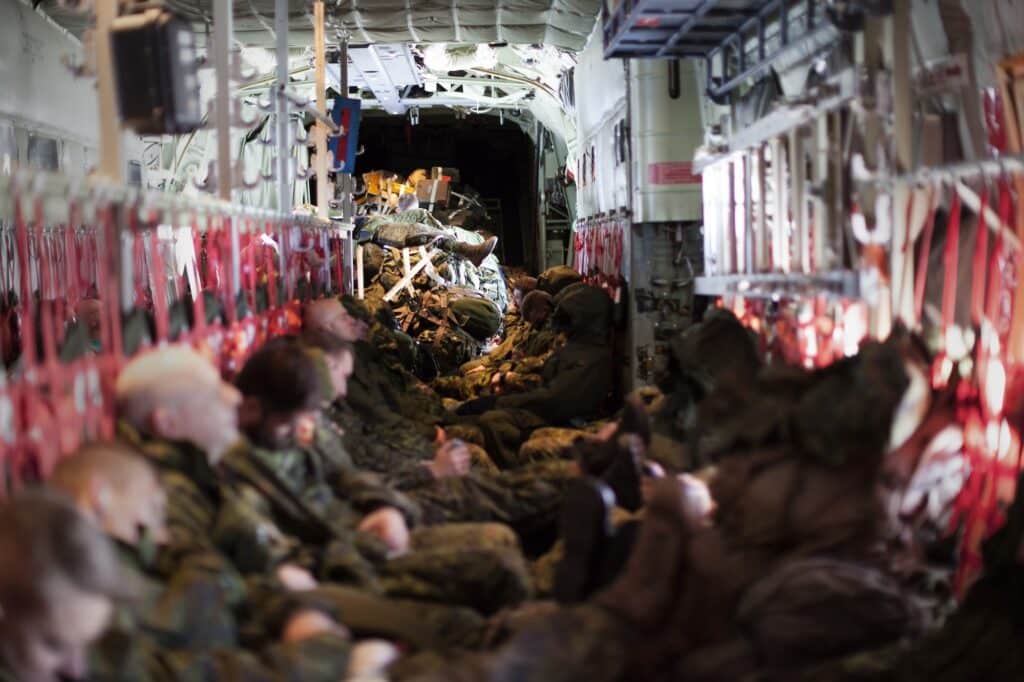
Living in the Arctic
“The cold. The cold is deadly. You must never stray from the group, you can’t have unforeseen situations, you let your engines stall,” says Léonard. With temperatures reaching –50°C, such extreme cold is a crucial factor in planning any photographic activity.
Echoing Professor Roussel’s observations about the region’s limited infrastructure, the photographer points to the impossibility of acquiring or repairing equipment, coupled with the need to always “having all supplies in duplicate.”
For example, car engines need to keep running constantly to prevent them from freezing. “You’d think it would be extraordinarily quiet. But it isn’t! There’s never any silence. Ever. Because silence would mean a stopped engine,” the photographer ironizes, recalling the constant, muffled noises that echoed across the Arctic expanses.
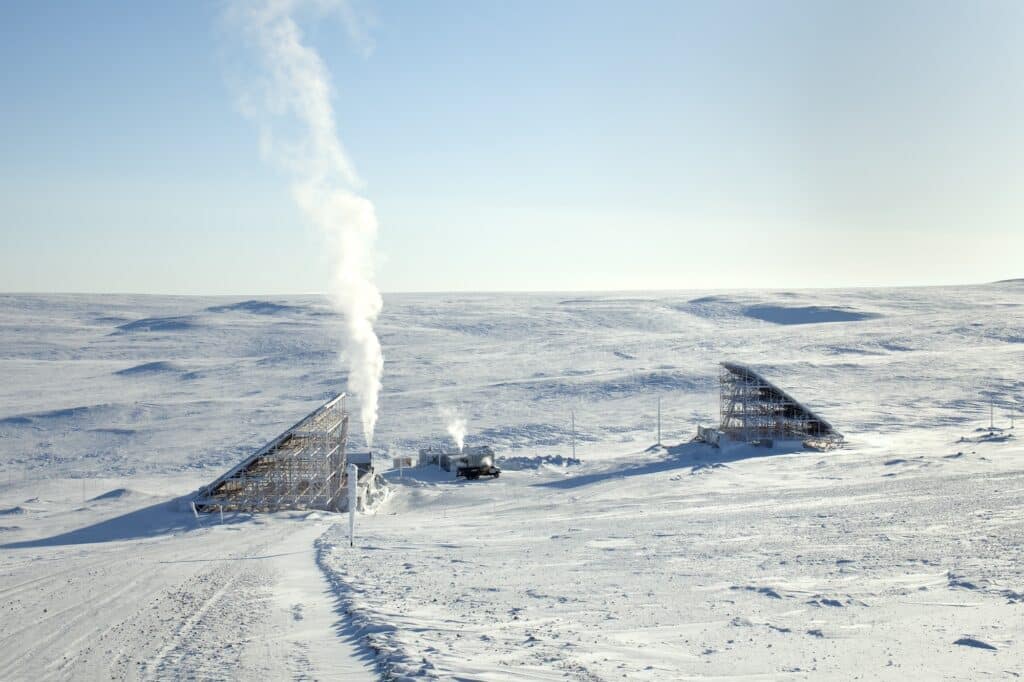
Léonard had to get used to the cold. To make do. She learned to deal with her glasses fogging up, her fingers growing numb, her inability to operate her photo and video cameras. “I would set the focus to infinity and then I wouldn’t touch it again, not focusing at all,” she says. The same applied to her video: “I would start recording and then walk away with the tripod. Because of this, the footage is full of flaws. Sometimes, you can’t see the person who is there, but you can feel a kick against a tripod leg, which happened on several occasions.”
By working hand in hand with the Inuit rangers, the military benefit from their expertise and intimate knowledge of the terrain and the cold— essential for the armed forces to operate at such latitudes.
The renewed political interest in the region has not yet spoiled the beauty of the place. “It’s extremely rare to find a place so devoid of human construction,” marvels Léonard.
Even with its harshness and isolation, the photographer insists that the place “leaves an indelible mark on those who visit. It’s unlike anything else.” Catherine Bédard of the Canadian Cultural Centre “senses” and “feels” these emotions in Léonard’s photographs—emotions stirred by the raw beauty of the place and perhaps also by its desolation.
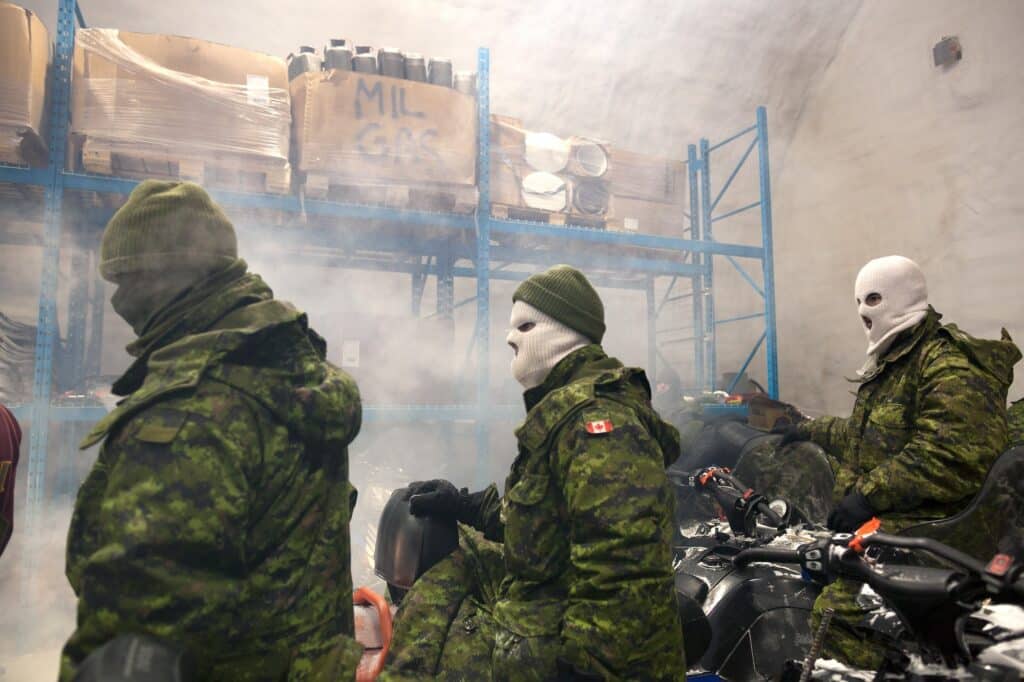
Saving the Far North
The vulnerability of the Arctic, often described as a pristine jewel, is a clear signal of the urgent and critical nature of climate change, according to Stéphane Roussel: “The Arctic is the world’s bellwether. We’re seeing catastrophic forest fires, severe droughts; the Arctic is undergoing catastrophic alterations due to climate change.”
Professor Florent Domine, CNRS research director of the Takuvik joint unit set up by the CNRS and Quebec’s Laval University, echoes Roussel’s sense or urgency, pointing out that “the Arctic is warming four times faster than the rest of the planet.” And yet “we’ve known this since 1896, and the scientific basis is more than sufficient.”
The climatic issues are multifaceted—local and global, economic, geomorphological—and they are interconnected, influencing each other through feedback loops. In direct relation to the lack of infrastructure in Canada’s Far North, Florent Domine explains that the thawing of permafrost and the melting of glaciers will change the topography of the area. “For example, infrastructure will collapse, roads will subside and become impassable, airport runways crack….”
“There is a lot of ice in the Canadian Arctic. With global warming, this ice melts when temperatures rise above 0°C.” And temperatures rise above freezing with increasing regularity.
The permafrost underlying the Arctic landscape is a relic from 10,000 years ago, formed when the ground froze after the retreat of local ice caps. This layer, when in contact with water, can turn it into ice. However, as global warming triggers thawing, the previously firm ground turns spongy and less stable, creating conditions for “thermokarst” lakes to form.
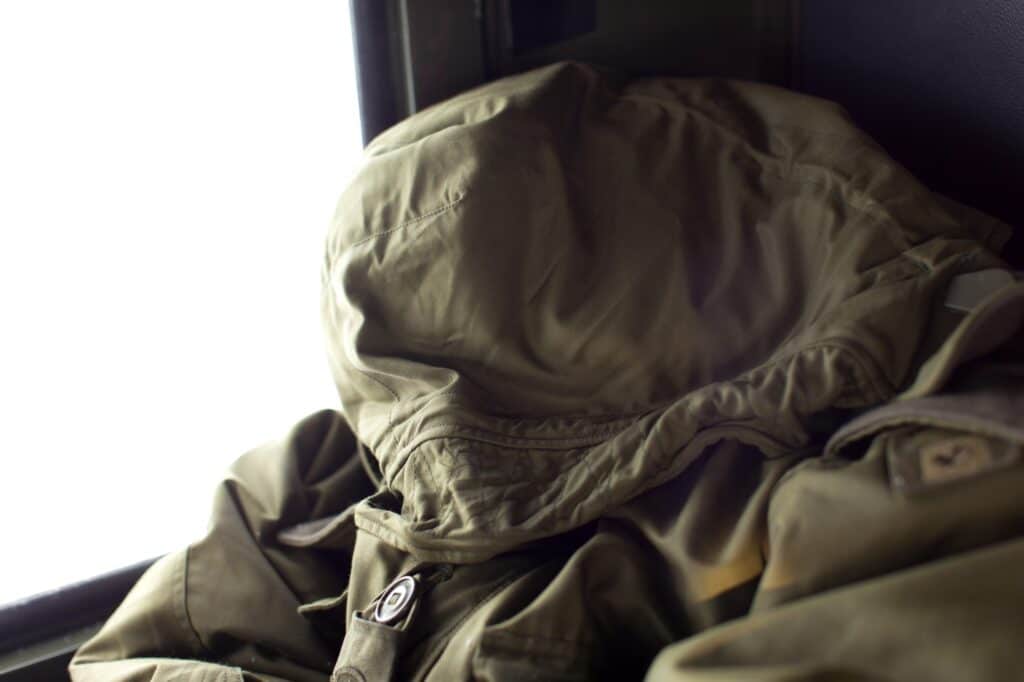
Florent Domine explains another intricacy: “When a tree or shrub dies, it normally becomes humus and releases CO2.” This CO2 joins the gases already in the atmosphere and those produced by human activity, becoming part of the carbon cycle.
“In the Arctic, it’s a different story. Why? Because the vegetation doesn’t decompose—it freezes instead.” Consequently, the cycle is disrupted and vegetation accumulates. “The vegetation that’s stored and conserved on-site is what we refer to as carbon stocks. But with climate change, the decomposition cycle may restart, leading to a rapid and substantial increase in atmospheric CO2, thus exacerbating global warming,” the scientist elaborates.
The same principle applies to the oceans: “Bright surfaces like glaciers reflect some of the sun’s light, whereas dark surfaces absorb it. That’s why the oceans are warmer.” Therefore, the melting of ice promotes global warming, which in turn speeds up the melting process.
Florent Domine also points out that “we know the methods to limit global warming. We are aware of the means to combat it. There’s only one way—by reducing greenhouse gas emissions. Period.” However, he regrets, “things won’t budge with the current political climate, where leaders are more concerned with their approval ratings.”
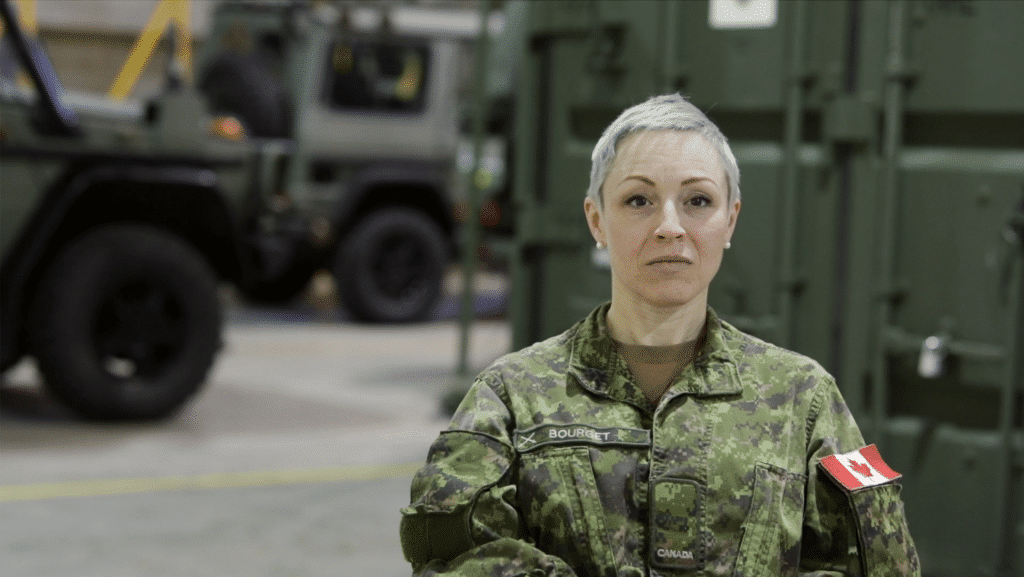
The Déploiement exhibition is on view at the Canadian Cultural Centre (Canadian Embassy, 130, rue du Faubourg Saint-Honoré, in the 8th arrondissement of Paris) until November 14, 2023.

